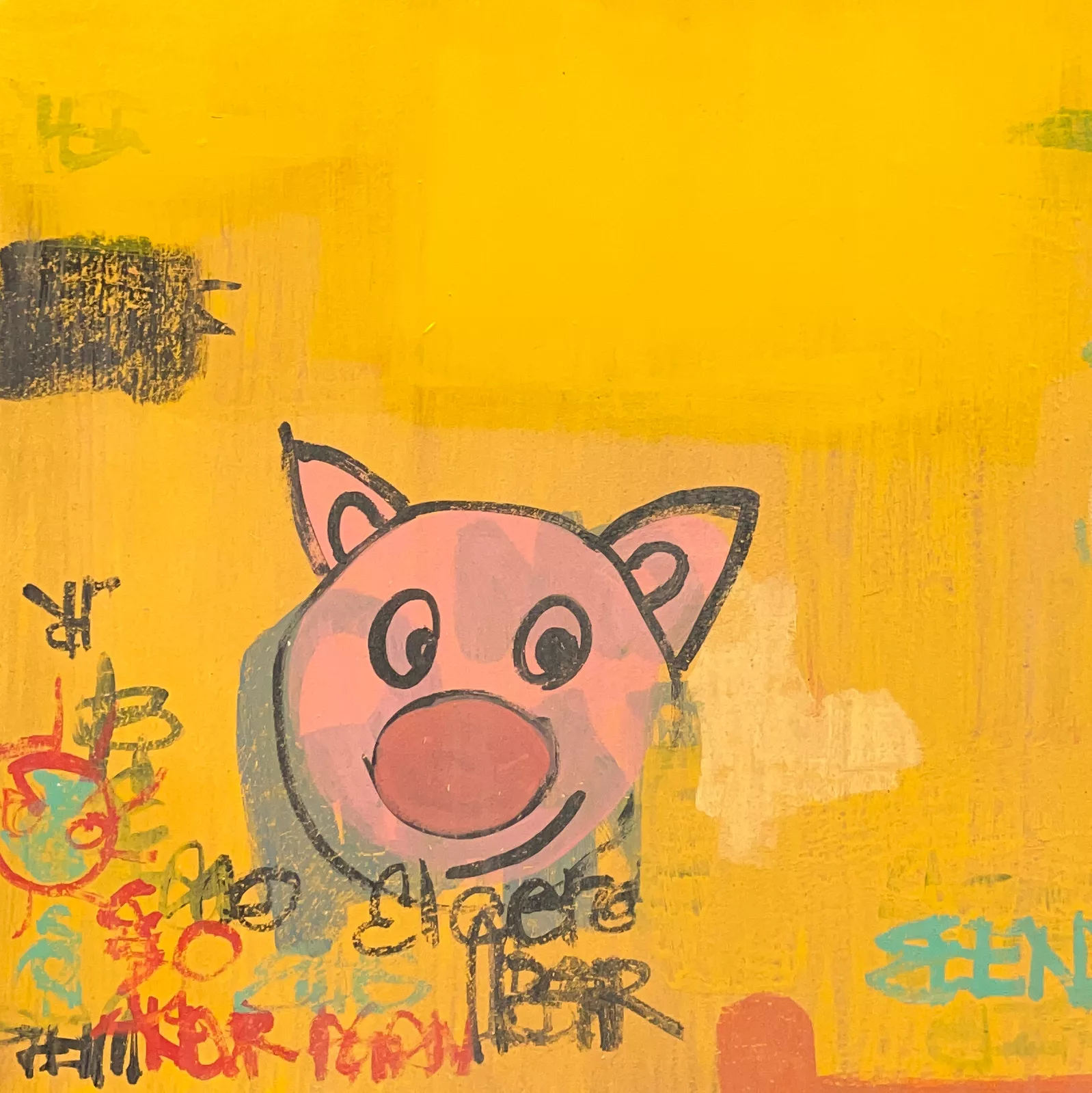Vincent van Gogh is now regarded as one of the most influential and beloved artists of all time. His striking use of color, emotive brushstrokes, and deeply personal subject matter have made his works iconic. Yet, during his lifetime, Vincent van Gogh did not enjoy the fame and recognition that would later define his legacy. It was only after his death that his work began to gain widespread recognition, and this was largely due to the tireless efforts of one woman—Johanna “Jo” Bonger, the wife of Vincent’s brother, Theo van Gogh. Jo Bonger played a crucial role in shaping Vincent’s posthumous legacy, and her commitment to promoting his art and preserving his letters helped introduce Vincent van Gogh to the world.
Jo Bonger’s Early Life and Marriage to Theo Van Gogh
Johanna Bonger was born on October 4, 1862, into a middle-class family in Amsterdam. She was the fifth of seven children and grew up in a household that valued education, culture, and literature. Jo was an intellectually curious and independent young woman. She studied English and became a teacher, which was unusual for women of her time, as higher education for women was not yet widely available. Her love of literature and art would later influence her work in promoting Vincent van Gogh’s legacy.
Jo’s life changed dramatically in 1888 when she met Theo van Gogh, an art dealer and the younger brother of Vincent van Gogh. Theo and Jo were introduced through mutual friends, and after a brief courtship, they married in April 1889. The couple moved to Paris, where Theo worked as an art dealer at the prominent Goupil & Cie gallery. Through her marriage to Theo, Jo became part of the van Gogh family and entered a world where art was deeply valued and discussed.
Theo had long been Vincent’s most steadfast supporter. Despite Vincent’s struggles with mental illness and his tumultuous artistic journey, Theo believed in his brother’s talent and potential. The bond between the brothers was intense and profound, as evidenced by their extensive correspondence over the years. Theo provided Vincent with financial support and encouragement, often at great personal cost, as Theo himself was not wealthy. Jo’s marriage to Theo brought her into direct contact with Vincent van Gogh, who was already a deeply troubled yet incredibly passionate artist.
The Tragic Deaths of Vincent and Theo Van Gogh
Jo and Theo’s marriage was tragically brief. In July 1890, just over a year after Jo and Theo’s son Vincent Willem van Gogh was born, Vincent van Gogh died from a gunshot wound in what is believed to have been a suicide. His death devastated Theo, who had been Vincent’s closest confidant and advocate. Less than six months later, in January 1891, Theo himself died from complications related to syphilis. His death left Jo a widow at the age of 28, with a small child to care for and little financial security.
In the aftermath of these tragedies, Jo found herself in possession of hundreds of Vincent van Gogh’s paintings and drawings, as well as the extensive letters Vincent had written to Theo over the years. At the time of his death, Vincent was virtually unknown outside of a small circle of artists. Although he had created some of his most famous works during the final years of his life—such as The Starry Night, Sunflowers, and Wheatfield with Crows—he had only sold a few paintings during his lifetime. The art world had not yet recognized his genius, and his work was not in demand.
It would have been easy for Jo to sell off Vincent’s paintings and move on with her life, but she recognized the artistic value of his work and the importance of preserving his legacy. Jo was not an art expert, but she had a keen eye for beauty and a deep understanding of the emotional power of Vincent’s work. She felt a profound responsibility to ensure that the world would come to appreciate Vincent van Gogh’s art, and she dedicated herself to that mission with remarkable determination.
Preserving and Promoting Vincent’s Legacy: Jo’s Strategic Vision
Jo Bonger’s first major contribution to Vincent van Gogh’s legacy was in preserving his letters. The correspondence between Vincent and Theo had been extensive, and Jo understood that these letters were not only deeply personal but also critical to understanding Vincent’s artistic journey and the emotional struggles he faced. She meticulously organized and edited the letters, eventually publishing them in 1914. The letters offered an intimate look at Vincent’s thoughts, his philosophy on art, and his relationship with Theo. They also revealed Vincent’s vulnerability and his profound sense of isolation, which added to the mythos surrounding his tragic life.
The letters became a crucial part of the van Gogh narrative, shaping the way the world came to understand him as both an artist and a person. Through these letters, Jo helped craft the image of Vincent as a tortured genius, a figure who had suffered for his art but whose work transcended his personal struggles. The letters humanized Vincent and allowed art critics and the public to see him not just as a misunderstood artist but as a man of deep sensitivity and vision.
Jo’s next step was to promote Vincent’s paintings, which were still largely unknown outside of a small circle of avant-garde artists and critics. She began loaning his works to exhibitions across Europe, including in the Netherlands, Germany, and France. Jo was strategic in how she introduced Vincent’s art to the public. She worked with influential art dealers, gallery owners, and critics to ensure that Vincent’s works were shown in prominent exhibitions alongside the work of other leading artists of the time.
One of Jo’s most significant achievements was her ability to get Vincent’s work included in exhibitions that emphasized the connections between Vincent and other key figures in the Post-Impressionist movement, such as Paul Gauguin, Georges Seurat, and Paul Cézanne. By situating Vincent’s work within this context, Jo helped position him as a major figure in the development of modern art. Critics began to take notice, and slowly but surely, Vincent van Gogh’s reputation as an important artist began to grow.
The Art Market and Van Gogh’s Posthumous Fame
Jo’s efforts to promote Vincent van Gogh’s art were not immediately successful. In the early years after Theo and Vincent’s deaths, Vincent’s work was still met with skepticism by many in the art world. His bold use of color and his unconventional techniques were seen as too radical for many art collectors and critics. However, Jo was patient and persistent. She refused to sell Vincent’s paintings at low prices, believing that they would eventually be recognized for their true value. Her patience paid off.
By the early 1900s, interest in Vincent van Gogh’s work had begun to grow, particularly in Germany. German art collectors and critics were among the first to recognize Vincent’s genius, and his work was featured in several important exhibitions in cities like Berlin, Munich, and Hamburg. Jo’s decision to exhibit Vincent’s work in Germany was a turning point in his posthumous career. The German Expressionist movement, which emerged in the early 20th century, was heavily influenced by Vincent’s use of color and emotional intensity. Artists like Ernst Ludwig Kirchner and Emil Nolde drew inspiration from van Gogh, and their admiration helped to elevate his status within the art world.
As demand for Vincent’s paintings grew, so did their market value. Jo began to sell some of the works to museums and private collectors, but she was careful to retain a significant portion of the collection for future generations. She understood that Vincent’s legacy needed to be carefully managed, and she was determined that his works would not be scattered indiscriminately. Her foresight ensured that a substantial number of Vincent’s most important works remained intact, eventually forming the core of the Van Gogh Museum in Amsterdam, which opened in 1973.
Impression
Jo Bonger’s efforts to preserve and promote Vincent van Gogh’s legacy culminated in the establishment of the Van Gogh Museum, which houses the largest collection of Vincent’s works in the world. The museum’s collection includes over 200 paintings, 500 drawings, and 700 letters by Vincent van Gogh. It stands as a testament to Jo’s dedication to ensuring that Vincent’s art would be accessible to future generations.
The Van Gogh Museum is not only a place where people can view Vincent’s masterpieces, but it is also a center for research and scholarship on his life and work. The museum’s archives contain a wealth of information about Vincent’s artistic process, his personal struggles, and his relationships with his family and contemporaries. Much of this material was preserved thanks to Jo’s meticulous record-keeping and her commitment to documenting Vincent’s life.
Jo’s decision to publish Vincent’s letters also had a lasting impact on the way his work is interpreted. The letters provide invaluable insights into Vincent’s creative process, his thoughts on color and composition, and his philosophical views on art and life. They allow art historians and scholars to better understand the motivations behind some of his most famous works, such as The Starry Night and Irises.
Jo Bonger’s Remarkable Contribution to Art History
Johanna Bonger van Gogh was a woman of remarkable vision and tenacity. In the face of personal tragedy, she took on the responsibility of preserving and promoting the work of an artist who, during his lifetime, had been largely ignored by the art establishment. Through her tireless efforts, Vincent van Gogh’s art found the audience it deserved, and his legacy as one of the most important artists in history was secured.
Jo’s contributions to art history cannot be overstated. She not only introduced the world to Vincent van Gogh’s genius but also shaped the way we understand his life and work. Her careful curation of his paintings, her decision to publish his letters, and her strategic promotion of his art all played a crucial role in elevating Vincent van Gogh from obscurity to global fame. Today, Vincent van Gogh’s paintings are some of the most recognizable and valuable works of art in the world, and much of that is thanks to Jo Bonger’s unwavering belief in his talent.
In recognizing Jo Bonger’s contribution, we also acknowledge the often-overlooked role that women have played in shaping the art world. Jo’s story is a powerful reminder that behind many of the great artists in history, there are individuals—often women—who work behind the scenes to ensure that their legacies endure. Jo Bonger’s life and work are a testament to the power of perseverance, vision, and a deep belief in the transformative power of art. Without her, the world might never have fully appreciated the brilliance of Vincent van Gogh.
No comments yet.








